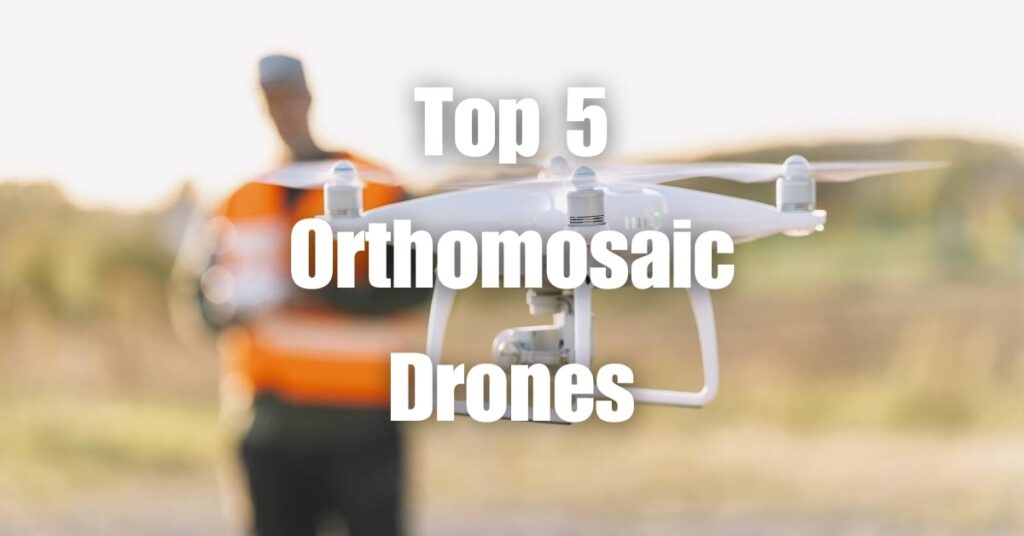Unmanned Aerial Vehicles (UAVs), more commonly known as drones, are revolutionizing industries worldwide. Their wide range of applications, from film-making to agricultural surveying, makes them an indispensable business tool. In the face of this rising trend, many aspiring entrepreneurs see an opportunity in becoming drone service providers. But the success of such a venture is not without a comprehensive Drone Service Provider Business Plan. This article seeks to guide you through the complexities of creating such a plan, unveiling your path to success in this booming industry.
Understanding the Concept of a Drone Service Provider
A drone service provider is a business that offers a wide range of commercial services using drones or Unmanned Aerial Vehicles (UAVs). The emergence of drones as practical business tools has opened a plethora of opportunities across numerous industries, including real estate, cinematography, agriculture, infrastructure inspection, disaster management, and more.
Operating a drone service business requires proficiency in piloting drones, deep understanding of the relevant regulations, and a strategic business approach. The specific services offered by drone service providers can vary widely, depending on their focus industry. Some of the common services include aerial photography and videography, surveying and mapping, agricultural monitoring, and drone-based inspections.
While the concept may seem straightforward, entering the drone service market requires careful planning, resource allocation, and strategy execution. That’s where a well-crafted business plan comes into play.
Importance of a Business Plan
In the world of business, a dream without a plan is just a wish. The business plan serves as the compass that directs your venture towards its goals. It presents a clear picture of what you want to achieve and how you intend to do it. For a drone service provider, the business plan is a critical document that will guide the business through its initial setup, launch, and growth.
A drone service provider business plan helps with:
Clarifying objectives: The business plan forces you to articulate your business goals, strategies, and the pathway to reach your desired outcome.
Attracting investors: A well-documented business plan is an essential tool when pitching to potential investors. It demonstrates that you have a solid understanding of the drone service market and a viable plan to achieve profitability.
Ensuring financial feasibility: By projecting revenues, costs, and cash flow, your business plan helps you ensure that your business idea is financially feasible.
Guiding operation and management: The business plan provides a roadmap for your business operations, management, and growth.
Mitigating risks: By researching and writing a business plan, you’ll identify potential risks and obstacles your drone service business might face, allowing you to devise strategies to mitigate them.
In essence, the business plan lays the groundwork for your drone service provider business and paves the way for success. It’s not just a document, but a dynamic tool that will evolve as your business grows and the market landscape changes.
Key Components of a Drone Service Provider Business Plan
Creating a solid business plan for your drone service provider business involves structuring and elaborating on several key components. These elements are the building blocks that contribute to a comprehensive overview of your business strategy, operations, financial projections, and market positioning. Here are the major sections of a drone service provider business plan:
Executive Summary
The Executive Summary is often considered the most important section of a business plan. It provides a snapshot of your business concept, your business’s unique aspects, and why it is poised for success. Typically, it should cover your business’s mission statement, the services you offer, basic information about your company’s leadership team, employees, and location, and a brief overview of your financial information and plans for future growth.
Although the executive summary appears first in the business plan, it’s often beneficial to write it last, after you have a full understanding of the details that summarise your business.
Company Description
The Company Description provides an in-depth view of your drone service provider business. This section should include the legal structure of your business, a detailed description of the services you provide, and the specific needs of your target market that your business aims to fulfill.
Further, it should outline how your services meet these needs and how you differentiate yourself from the competition. Also, you should mention any factors that could contribute to your business’s success, such as strategic relationships with suppliers or partners, or a dedicated and experienced team.
In the next sections, we will delve deeper into other crucial components of a drone service provider business plan.
Executive Summary
The first key component of your business plan is the executive summary. This section provides a high-level overview of your business, including your mission, the services you provide, and why your business is uniquely positioned for success.
Here are some details to include:
Mission: Start with your company’s mission statement. It should succinctly capture your business’s goals and the philosophies underlying them.
Services: Provide a brief description of the services you will be offering as a drone service provider. Highlight those that distinguish you from competitors.
Company information: Discuss the ownership structure and information about the company’s founders, including their relevant experience.
Success factors: Enumerate the factors that you believe will make your business a success. These could include your team’s skills, market trends favoring drone services, or your unique value proposition.
Remember, the executive summary is the first impression a reader or potential investor gets of your business plan. So, make sure it is well-written, concise, and captivating. Although it comes first in your business plan, consider writing it last to ensure all important points from the complete plan are included.
Company Description
The company description is an in-depth look at your drone service provider business. It gives readers, including potential investors and partners, a clear understanding of how your business fits into the drone industry.
Nature of the Business
Begin by explaining the nature of your business. You’re a drone service provider, but what does that mean in terms of the services you offer? For instance, do you specialize in aerial photography for real estate listings, infrastructure inspections, precision agriculture, or all of the above? Highlight the services you provide, your operational processes, and any value-added services you may offer.
Legal Structure
Identify the legal structure of your company. Are you a sole proprietorship, a partnership, a limited liability company (LLC), or a corporation? The choice of legal structure will have significant implications for your taxes, liabilities, and the way you run your business.
Vision and Goals
Include your business’s vision and goals. Your vision statement should be a forward-looking view of what you want to achieve, while your business goals should be specific, measurable, achievable, relevant, and time-bound (SMART).
Target Market
Detail the needs of your potential customers and explain how your services meet those needs. A clear understanding of your target market, including demographics, behavior patterns, and geographic location, will allow you to tailor your services and marketing strategy effectively.
Competitive Advantage
Here, you should also highlight what sets your business apart from other drone service providers. Your unique selling points could be advanced equipment, experienced staff, unique service offerings, or innovative processes.
Market Analysis – How to Create a Comprehensive Market Analysis
A comprehensive market analysis is critical to understanding your industry, competitors, and customers. It allows you to make informed decisions, reduce risks, identify opportunities, and formulate effective strategies.
Industry Overview
Start by providing an overview of the drone industry. Cover aspects such as the industry’s size, growth rate, and key trends. Also, discuss the major factors driving the growth of the drone services market, such as technological advancements, regulatory changes, and industry-specific demand.
Target Market
Next, define your target market. You should detail the demographic, geographic, and psychographic characteristics of your potential customers. Moreover, estimate the size of your target market.
Competitive Analysis
Identify your main competitors and analyze their strengths and weaknesses. Understanding your competition will help you spot gaps in the market that you can exploit and avoid their mistakes. Also, consider conducting a SWOT (Strengths, Weaknesses, Opportunities, and Threats) analysis for a deeper understanding of the market landscape.
Pricing and Demand
Understanding the pricing dynamics and demand patterns in your market is also crucial. How much are customers willing to pay for drone services? What factors influence the demand for drone services? This information will inform your pricing and sales strategy.
Regulatory Environment
The drone industry is highly regulated, so be sure to discuss any laws or regulations that could affect your business. For instance, you may need specific licenses or certifications to operate.
Conducting a thorough market analysis will not only help you make strategic decisions but also demonstrate to potential investors that you understand your industry and are prepared to navigate its complexities.
Organization and Management
This section of your drone service provider business plan should detail your company’s organizational structure, the ownership of your business, your management team, and your human resources needs.
Organizational Structure
Start by defining your business’s structure. This may be a simple hierarchy for a small business, or a more complex arrangement involving various teams and departments. An organizational chart can be helpful in visualizing the structure of your business.
Ownership Information
Provide information about the ownership of your business. This includes details about the principal owners, their percentage of ownership, and the type of ownership (common or preferred stock, for example).
Management Team
This is where you introduce your management team, outlining their roles and responsibilities. Highlight their skills, experiences, and contributions that will be beneficial to your business. Including their brief bios can be a good idea to add more credibility.
Human Resources
Discuss your human resources needs. How many employees do you need at the start, and how will this grow over time? What roles will they play in your business, and what skills should they have? This gives an idea of your hiring plans and how it aligns with your growth strategies.
Services and Product Line – Differentiating Your Drone Service Business
In this section, you will describe in detail the services you plan to offer and how they will benefit your clients. The objective is to convince potential investors, partners, and other stakeholders that your services are both achievable and profitable.
Description of Services
Begin with a detailed description of your drone services. This could include aerial photography, inspections, mapping, surveillance, agriculture services, and more. Explain how each service works, the technologies and equipment involved, and the process from order to delivery.
Customer Benefits
Describe the benefits of your services to your clients. How do they solve problems or provide value for your clients? Demonstrating this will help to persuade potential investors of your company’s worth and attract potential customers.
Differentiation
With the drone services industry becoming increasingly competitive, it’s important to differentiate your business from others. What makes your services unique? This could be anything from special technology, exclusive partnerships, superior customer service, or innovative pricing models.
In the end, your goal is to demonstrate that your company offers something unique in the market that will attract customers and assure investors of your competitive advantage.
Marketing and Sales Strategy – Marketing Strategies for a Drone Service Business
Formulating a robust marketing and sales strategy is pivotal for your drone service business’s success. This section focuses on the tactics you’ll employ to attract and retain customers.
Understand Your Market
First, familiarize yourself with your potential customers, their needs, and how your services can fulfill those needs. In addition to your market analysis, this might involve additional research or even conversations with potential customers.
Build a Strong Online Presence
A professional and informative website serves as your online storefront. Make sure it reflects your brand and clearly explains the benefits of your services. Utilize Search Engine Optimization (SEO) to enhance visibility in search engine results. Engage with your audience through social media and keep them updated with industry-related news and the latest developments in your company.
Network with Related Industries
Establish connections with industries that could benefit from your drone services. This could include real estate agencies, event management companies, construction companies, or agriculture industries. Attending industry conferences and networking events can provide opportunities to make these connections.
Customer Retention Strategies
Once you’ve attracted customers, implement strategies to retain them. This could include excellent customer service, loyalty programs, or providing additional value through informative content or personalized services.
Financial Projections – What to Include in this Section
Financial projections are essential to your drone service provider business plan, as they give potential investors, lenders, or partners an idea of the profitability of your business.
Revenue Projections
Estimate your annual revenue. Consider factors such as the price of your services, the number of clients you expect to serve, and the frequency of service for each client.
Cost Estimation
Include both your startup costs (such as equipment purchase, licensing, and marketing) and your ongoing operational costs. Don’t forget to factor in potential repair or replacement costs for your drones.
Profit and Loss Statement
This is a summary of your revenues, costs, and expenses incurred during a specific period. It provides a clear view of your business’s operational performance.
Cash Flow Statement
A cash flow statement gives a snapshot of how money moves in and out of your business. It helps track your business’s liquidity and solvency.
Balance Sheet
A balance sheet offers a picture of what your company owns (assets) and owes (liabilities), along with the amount invested by shareholders.
These financial projections should be as realistic as possible, reflecting both the potential and the risks of your business.
Legal and Regulatory Considerations for a Drone Service Provider Business Plan
Adherence to legal and regulatory frameworks is essential for operating a drone service business. Ignorance of the law can lead to significant penalties and jeopardize your business.
Federal Aviation Administration (FAA) Regulations
In the United States, the FAA regulates commercial drone use. Be sure to familiarize yourself with their guidelines, which include restrictions on drone weight, flying altitude, and operations near airports, among others.
Local Laws
Some states, counties, or cities may have their own additional regulations on drone use. It’s essential to check the rules in the areas you’ll be operating.
Licensing and Certification
The FAA requires commercial drone operators to have a Remote Pilot Certificate, which involves passing an aeronautical knowledge test.
Privacy Laws
Privacy laws vary by location, but in general, you should avoid filming or photographing individuals without their consent or flying over private property without permission.
Ensure that your business plan addresses these considerations and demonstrates a commitment to legal and ethical operation.
By adhering to these guidelines and principles, your drone service provider business plan will stand as a robust roadmap to launch and grow your business successfully. Each section interlinks with the other, creating a comprehensive view of your business and how it will operate in the competitive drone service market.
Drone Service Provider Startup Checklist
Setting up a drone service business involves several key steps. This section provides a checklist to guide you through the startup process.
Define Your Business
Outline your business’s purpose, mission, and vision. Establish what services you will provide and identify your target market.
Develop Your Business Plan
As outlined above, a comprehensive business plan is crucial. It should include your executive summary, market analysis, organization and management structure, description of your services, marketing and sales strategy, and financial projections.
Legal Formalities
Choose a business structure (sole proprietorship, LLC, corporation, etc.) and register your business name. Obtain necessary licenses and permits, including the FAA’s Remote Pilot Certificate for commercial drone operations.
Purchase Equipment
Acquire the drones and other necessary equipment for your services. Consider the type of drone, camera and sensor specifications, software for data analysis, and safety equipment.
Setup Operations
Find a location for your business (if necessary), establish your operational processes, and hire any necessary staff.
Implement Your Marketing and Sales Strategy
Build your website and online presence, network with related industries, and begin promoting your services according to your marketing plan.
Launch Your Business
Start offering your services to clients. Provide excellent customer service and start building relationships to ensure customer retention.
Funding Options and Pricing Models for Drone Service Providers
Capital is crucial for any startup, and there are several avenues drone service providers can explore.
Personal Savings
Investing your personal savings is the most straightforward funding option, but it carries the risk of personal financial loss.
Bank Loans
Traditional bank loans are a common funding source, but they require a strong business plan and usually some form of collateral.
Investors
Angel investors or venture capitalists might be interested in a unique and promising business idea. They provide funding in exchange for equity in the company.
Crowdfunding
Platforms like Kickstarter allow businesses to raise small amounts of money from a large number of people, often in exchange for rewards or early access to products or services.
Pricing models for drone services can vary. Some businesses charge a flat rate per project, others charge an hourly rate, and some offer package deals for different services. It’s crucial to ensure that your pricing not only covers your costs but also reflects the value you are providing to your clients.
Crafting a Unique Value Proposition for Your Drone Service Business
Your unique value proposition (UVP) is what sets you apart from your competitors. It succinctly communicates the unique benefits that customers can expect from your service.
To craft a compelling UVP, consider what makes your drone service business unique. Perhaps it’s your cutting-edge equipment, your extensive experience and expertise, or a particular niche market you serve. Whatever it is, make sure it’s something that your competitors can’t easily replicate and that it’s meaningful to your potential customers.
Crafting a robust Drone Service Provider Business Plan is an essential first step towards realizing your ambitions in the drone industry. This plan will guide your business operations, financial projections, and marketing strategies, each crucial to your venture’s growth and profitability. However, the journey doesn’t end here.
For a more in-depth understanding of building a drone business, we strongly recommend visiting Soaring High: A Comprehensive Guide to Building and Growing Your Drone Business. This guide further supplements the insights gained from this article, arming you with the necessary knowledge to successfully navigate the drone business landscape.
Should you require any drone services or have queries about establishing your drone service provider business, feel free to contact Blue Falcon. As seasoned industry veterans, we’re here to guide you on your drone business journey, ensuring your trajectory leads to success.




